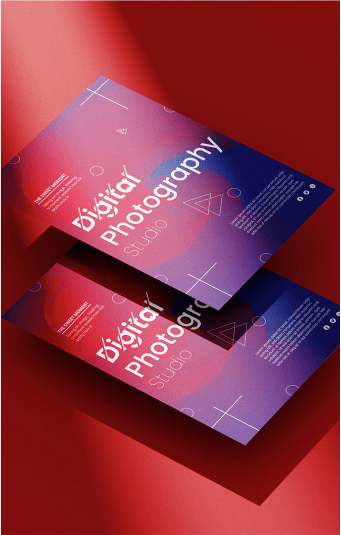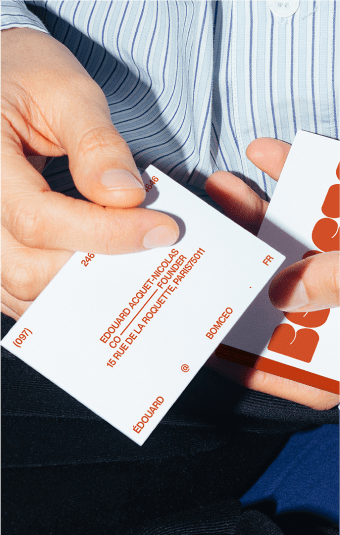Color is powerful. It can cause emotions, propel memories and even influence our shopping decisions. In today’s highly competitive marketplace, understanding the science behind how colors impact how consumers interact with your brand is essential for businesses to stay ahead of their competitors. This blog post closely examines color psychology to explore why certain hues evoke specific reactions in humans at an unconscious level and what this means for companies seeking to maximize trustworthiness and brand loyalty among customers. We’ll discuss the research around color selection, provide marketing strategies that leverage these findings and offer helpful tips on choosing a cohesive palette that resonates with an intended audience for maximum success.
Why Color Matters for Businesses?
Color plays a crucial role in branding as it influences people’s emotions and perceptions of a brand. The right color choice can evoke a range of emotions, from trust and reliability to excitement and passion. For businesses, understanding color psychology can be the key to creating a strong, recognizable brand that stands out from the competition. By selecting colors that align with their brand values and messaging, companies can create a visual identity that resonates with their target audience. In today’s competitive marketplace, where brands are vying for attention, the power of color in branding cannot be overlooked. It is an essential tool in building brand recognition, creating an emotional connection with consumers, and ultimately driving business success.
Emotional Meaning Behind Hues
Colors are more than just visual stimuli. They are ingrained into our thoughts and emotions and evoke certain psychological and emotional responses. Every hue has its own psychological and emotional meaning. For example, red is often associated with passion, energy, and intensity, while yellow is associated with optimism, happiness, and warmth. Blue is often viewed as calming, trustworthy, and serene, while green evokes feelings of growth, balance, and harmony. Knowing the psychological and emotional meaning behind different color hues can be a powerful tool in creating meaningful and impactful visuals, designs, and art.
The Science Behind Color Selection
Color selection is a complex science that has far-reaching impacts on our daily lives. Multiple color theories exist, each with its own set of rules and principles governing color combinations. From complementary colors to monochromatic schemes, each theory has its place in design and art. However, the selection of colors extends beyond aesthetics; it is an emotional experience that can stir up feelings of excitement, warmth, or calmness. Colors can influence everything from our mood to our purchase decisions, making it an essential aspect of brand marketing. By understanding the science behind color selection, we can create impactful, visually appealing designs that resonate with our target audience.
Scientific Breakdowns
Color plays a significant role in branding, and scientific research confirms this fact. According to various studies, color makes up about 85% of the primary reasons that people buy particular products. Furthermore, researchers have found that using the right colors can increase brand recognition by about 80%. The scientific explanation lies in the way color affects our emotions, which, in turn, influences buying behavior. Different colors convey different emotional messages, and thus, choosing the right color can impact your brand’s ability to connect with customers. To increase your brand’s chances of success, it’s essential to consider the psychological effects of color selection.
Breaking Down the Color Wheel
The colors a brand uses can speak volumes about its values and personality. While many may associate colors like red with power and passion or green with nature and growth, the way these hues are displayed and combined on a brand’s logo or website can have a substantial impact on consumers’ perceptions of its trustworthiness. Breaking down the color wheel can help us understand why certain brands evoke a sense of reliability or approachability, while others may seem cold or untrustworthy. By digging into the psychology behind color, we can gain a greater grasp of how brands can use this powerful tool to build lasting connections with their audiences.
a) Red, Orange, and Yellow
The colors red, orange, and yellow can hold significant meaning in branding. Red is a color of passion and intensity, creating a sense of urgency and excitement. Orange is associated with energy, warmth, and friendliness, making it the perfect color to convey a welcoming feeling. Lastly, yellow represents positivity, happiness, and cheerfulness. One may use this bright color to showcase their brand as uplifting and optimistic. All three colors work together to create a dynamic and engaging brand personality.
b) Green, Blue, and Purple
The green color represents growth, nature, and health. It’s frequently used in brands related to eco-friendliness, financial institutions, and health products. Blue symbolizes trust, reliability, and professionalism; that’s why it’s commonly used in the corporate world, healthcare, and banking sectors. Finally, purple represents luxury, royalty, and creativity, and is often used in the beauty and fashion industry.
c) White and Black
The combination of white and black is a timeless and powerful statement that can transform any space. These contrasting colors symbolize purity and sophistication while balancing each other out. The white and black color palate provides a sense of clarity and simplicity without sacrificing elegance. It’s a sleek and striking contrast that can be incorporated in any design whether it’s fashion, home decor, or even a work of art. The black and white color scheme can create a dramatic and bold effect that demands attention. It’s a classic and chic choice that will never go out of style.
Examples of Marketing Campaigns That Have Successfully Used Color to Increase Brand Loyalty
From the bright red of Coca-Cola to the bold blue of IBM, colors can help a brand stand out and create an emotional connection with consumers. One example of this is the use of the color green by Starbucks. By associating their brand with the color of nature, growth, and sustainability, Starbucks has successfully positioned themselves as a socially responsible company that cares about the environment. As a result, customers who prioritize these values are more likely to develop a strong attachment to the brand, which can translate into increased loyalty and sales.
How Can Companies Use Colors to Create Memorable Customer Experience
Colors play a significant role in creating a memorable customer experience for businesses. Strategic use of colors can evoke emotions, influence behavior, and boost brand recognition. Companies often use specific colors in their branding to enhance their visual identity and improve brand recognition. For example, the blue and yellow colors of IKEA are recognized worldwide, reflecting reliability and affordability. Also, using contrasting colors for calls-to-action buttons attracts attention and encourages customers to act. Furthermore, different colors can convey different emotions and by understanding the psychological impact of colors, businesses can use them to write a compelling brand story and create a memorable customer experience.
Conclusion
In conclusion, companies need to be aware of the psychology and science behind color selection when building a brand identity. Through the use of colors that evoke emotion and create contrast, companies can enhance their customer experience, increase brand trust, and build customer loyalty. The various hues of color across the color wheel—Red, Orange, Yellow, Green, Blue, and Purple as well as leading shades such as White and Black—each bring something unique to a brand identity. According to scientific research, two-thirds of customers make their purchasing decisions based on color alone. Therefore, businesses need to take into consideration everything we have discussed in this blog post when creating motivating marketing campaigns that will appeal to consumers while also increasing trust in their brand.









